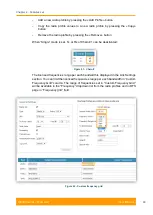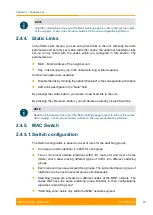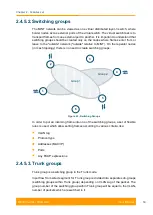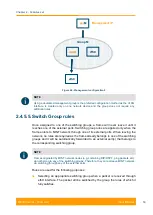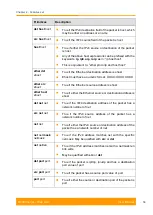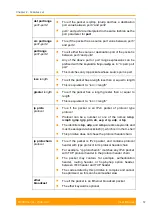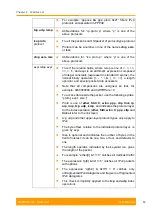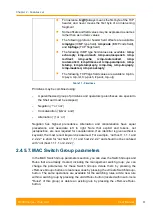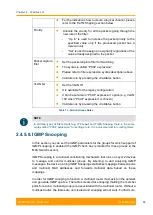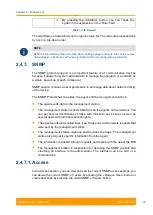
Chapter 2 - Features set
User Manual
R5000 series - Web GUI
61
For instance,
tcp[0]
always means the first byte of the TCP
header
, and never means the first byte of an intervening
fragment
Some offsets and field values may be expressed as names
rather than as numeric values
The following protocol header field offsets are available:
icmptype
(ICMP type field),
icmpcode
(ICMP code field),
and
tcpflags
(TCP flags field)
The following ICMP type field values are available:
icmp-
echoreply
,
icmp-unreach
,
icmp-sourcequench
,
icmp-
redirect
,
icmp-echo
,
icmp-routeradvert
,
icmp-
routersolicit
,
icmp-timxceed
,
icmp-paramprob
,
icmp-
tstamp
,
icmp-tstampreply
,
icmp-ireq
,
icmp-ireqreply
,
icmp-maskreq
,
icmp-maskreply
The following TCP flags field values are available: tcp-fin,
tcp-syn, tcp-rst, tcp-push, tcp-ack, tcp-urg
Table 11 - Primitives
Primitives may be combined using:
-
A parenthesized group of primitives and operators (parentheses are special to
the Shell and must be escaped)
-
Negation (`!' or `not')
-
Concatenation (`&&' or `and')
-
Alternation (`||' or `or')
Negation has highest precedence. Alternation and concatenation have equal
precedence and associate left to right. Note that explicit and tokens, not
juxtaposition, are now required for concatenation. If an identifier is given without a
keyword, the most recent keyword is assumed. For example,
“not host 1.1.1.1 and
2.2.2.2” is short for “not host 1.1.1.1 and host 2.2.2.2” and should not be confused
with
“not (host 1.1.1.1 or 2.2.2.2)”.
2.4.5.7. MAC Switch Group parameters
In the MAC Switch Group parameters section, you can view the Switch Groups and
Rules that are already created, including the management switch group; you can
change the parameters for these Switch Groups, delete them by pressing the
«Remove Group» button or create new ones by pressing the «Create Switch Group»
button. The same operations are available for the switching rules: add a new rule
within a switch group by pressing the «Add Rule» button (located within sub-menu
"Rules" of this group) or delete an existing rule by pressing the «Remove Rule»
button.


